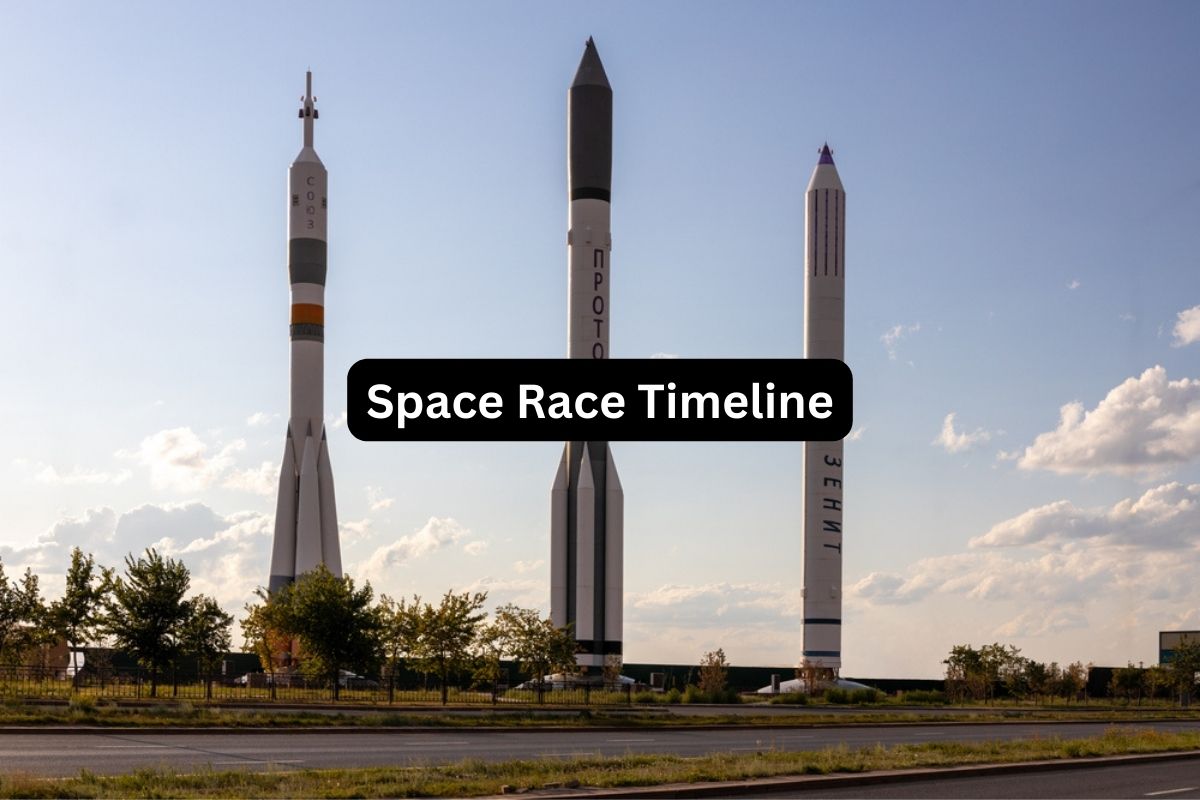The Space Race, a pivotal chapter in the history of human exploration, brought forth extraordinary achievements that forever altered our understanding of the cosmos.
This article explores key events and milestones, from the launch of Sputnik 1 to the Apollo 11 Moon landing, as well as the ongoing evolution of space exploration.
Join us on a journey through history, highlighting the remarkable achievements and challenges that have shaped our quest to reach the final frontier.
| Date | Event |
|---|---|
| October 4, 1957 | Soviet Union launches Sputnik 1, the world’s first artificial satellite, into orbit. |
| November 3, 1957 | Soviet Union launches Sputnik 2, carrying the first living creature in space, Laika the dog. |
| January 31, 1958 | United States launches Explorer 1, its first successful satellite, marking the beginning of American space exploration. |
| April 12, 1961 | Soviet cosmonaut Yuri Gagarin becomes the first human in space, completing one orbit around Earth in the Vostok 1 spacecraft. |
| May 5, 1961 | American astronaut Alan Shepard becomes the first American in space, riding aboard the Freedom 7 spacecraft on a suborbital flight. |
| February 20, 1962 | John Glenn becomes the first American to orbit the Earth aboard Friendship 7. |
| June 16-19, 1963 | Valentina Tereshkova, a Soviet cosmonaut, becomes the first woman in space aboard Vostok 6. |
| July 20, 1969 | American astronauts Neil Armstrong and Buzz Aldrin become the first humans to set foot on the Moon during NASA’s Apollo 11 mission, while Michael Collins orbits above in the command module. |
| April 12, 1981 | NASA launches the Space Shuttle Columbia, marking the beginning of the Space Shuttle program. |
| April 12, 1981 | On the 20th anniversary of Yuri Gagarin’s flight, NASA launches the first space shuttle, Columbia, on STS-1. |
| 1986 | The Challenger disaster occurs, resulting in the loss of the Space Shuttle Challenger and its crew. |
| 1988 | Soviet cosmonaut Valery Polyakov begins his record-setting 437-day spaceflight aboard the Mir space station. |
| November 20, 1998 | The first module of the International Space Station (ISS) is launched into orbit. |
| November 2, 2000 | The first long-term crew, Expedition 1, arrives at the International Space Station, marking the beginning of continuous human habitation in space. |
| July 21, 2011 | NASA’s Space Shuttle program comes to an end with the final flight of Atlantis on STS-135. |
| December 14, 2015 | SpaceX achieves a historic milestone by successfully landing the first stage of its Falcon 9 rocket vertically after a mission. |
| July 30, 2020 | NASA launches the Perseverance rover to Mars, marking the latest mission in the exploration of the Red Planet. |
| October 5, 2021 | Russian actress Yulia Peresild and director Klim Shipenko become the first civilians to travel to the ISS as part of a film production project. |
Timeline of the Space Race
October 4, 1957: Soviet Union launches Sputnik 1, the world’s first artificial satellite, into orbit
On this historic day, the Soviet Union achieved a major milestone in the history of space exploration by successfully launching Sputnik 1 into orbit. Sputnik 1 was the world’s first artificial satellite, and its launch marked the beginning of the Space Age.
This event had a profound impact on the world, as it signaled the start of the Space Race between the United States and the Soviet Union during the Cold War.
Also Read: Famous Rockets
Sputnik 1 was a spherical satellite equipped with radio transmitters, and its beeping radio signals could be received on Earth.
The launch of Sputnik 1 had political, scientific, and technological implications and initiated a period of intense competition between the two superpowers in the field of space exploration.
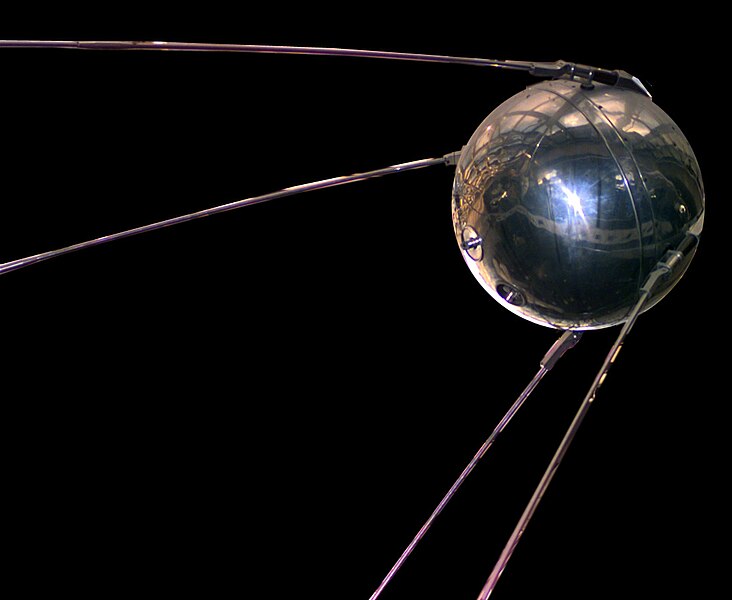
November 3, 1957: Soviet Union launches Sputnik 2, carrying the first living creature in space, Laika the dog
Less than a month after the launch of Sputnik 1, the Soviet Union continued to make history with the launch of Sputnik 2. This mission carried a living passenger, Laika, a female dog, making her the first living creature to venture into space.
Laika’s journey marked another significant step in the early days of space exploration, demonstrating the Soviet Union’s ability to send a living organism into space and return data about her vital signs.
Also Read: Space Race Facts
Unfortunately, the mission did not have a plan for Laika’s safe return to Earth, and she tragically perished in orbit. Nevertheless, Sputnik 2 provided valuable data for future human spaceflights and underscored the challenges and risks of space exploration.
January 31, 1958: United States launches Explorer 1, its first successful satellite, marking the beginning of American space exploration
In response to the Soviet Union’s early successes in space, the United States launched Explorer 1 on January 31, 1958. This mission marked the first successful American satellite launch and the beginning of the United States’ active participation in the Space Race.
Explorer 1 was designed primarily for scientific research and carried instruments to measure cosmic rays. One of its most significant discoveries was the detection of the Van Allen radiation belts, which are zones of charged particles surrounding Earth.
This discovery had important implications for the understanding of Earth’s magnetosphere and the potential hazards posed by radiation to future space missions.
Explorer 1’s success marked the start of a series of American space achievements that would eventually lead to human spaceflight and the Apollo moon landing program.
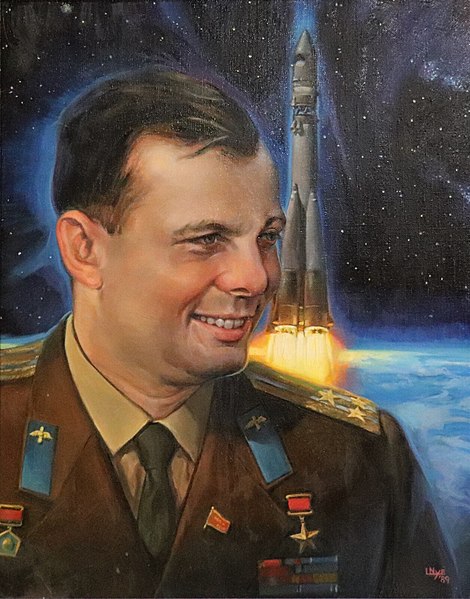
April 12, 1961: Soviet cosmonaut Yuri Gagarin becomes the first human in space, completing one orbit around Earth in the Vostok 1 spacecraft
On this historic day, Soviet cosmonaut Yuri Gagarin made history by becoming the first human to journey into space. He was launched into orbit aboard the Vostok 1 spacecraft, and during this mission, he completed one orbit around Earth.
Yuri Gagarin’s flight lasted approximately 108 minutes, during which he experienced weightlessness and observed the Earth from space. Gagarin’s successful mission not only made him an international hero but also marked a major milestone in space exploration.
His iconic phrase, “Poyekhali!” (Let’s go!), as he blasted off, is still remembered today. This achievement demonstrated the Soviet Union’s lead in the Space Race and intensified the competition between the United States and the Soviet Union in space exploration.
May 5, 1961: American astronaut Alan Shepard becomes the first American in space, riding aboard the Freedom 7 spacecraft on a suborbital flight
Just a few weeks after Yuri Gagarin’s historic flight, American astronaut Alan Shepard made his mark in space history by becoming the first American to journey into space. Shepard’s mission, named Freedom 7, was a suborbital flight aboard a Mercury-Redstone rocket.
Although it was a relatively short flight, lasting only 15 minutes, Shepard’s achievement demonstrated that the United States was capable of sending astronauts into space.
His successful mission boosted American morale and paved the way for future manned spaceflights, including the Apollo program.
February 20, 1962: John Glenn becomes the first American to orbit the Earth aboard Friendship 7
John Glenn’s mission, Friendship 7, marked a significant milestone in the early days of American space exploration. He became the first American astronaut to orbit the Earth, completing three orbits during his approximately five-hour mission.
Glenn’s flight was part of NASA’s Mercury program and was a critical step in the United States’ effort to catch up with the Soviet Union in the Space Race. The mission provided valuable data on the effects of space travel on the human body and the spacecraft’s performance.
Glenn’s successful orbit solidified his status as an American hero and played a crucial role in shaping the future of the U.S. space program, including the Apollo missions that ultimately landed astronauts on the Moon.
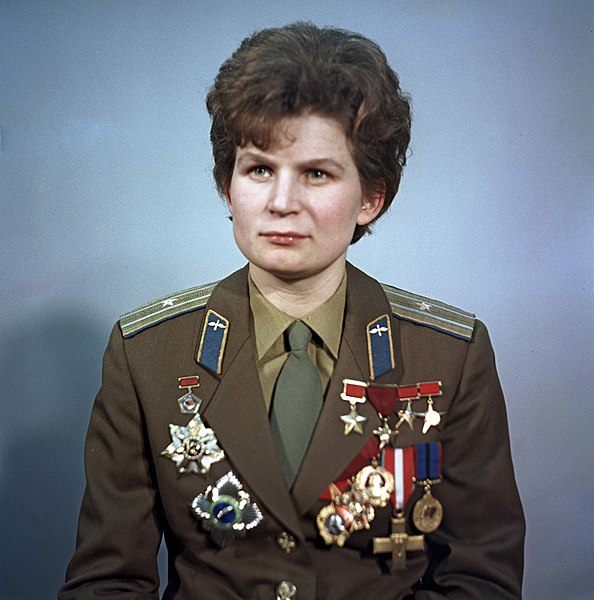
June 16-19, 1963: Valentina Tereshkova, a Soviet cosmonaut, becomes the first woman in space aboard Vostok 6
Valentina Tereshkova, a Soviet cosmonaut, made history as the first woman to travel into space. She was launched aboard the Vostok 6 spacecraft, becoming the first and youngest woman to orbit the Earth.
Tereshkova’s mission lasted almost three days, during which she conducted experiments and observations. Her historic flight marked an important milestone in gender equality in space exploration and was a significant achievement for the Soviet Union in the ongoing Space Race.
July 20, 1969: American astronauts Neil Armstrong and Buzz Aldrin become the first humans to set foot on the Moon during NASA’s Apollo 11 mission
NASA’s Apollo 11 mission, commanded by Neil Armstrong, with Buzz Aldrin and Michael Collins, marked one of the most iconic moments in human history. On July 20, 1969, Neil Armstrong and Buzz Aldrin became the first humans to set foot on the lunar surface, while Michael Collins orbited above in the command module.
Neil Armstrong’s famous words, “That’s one small step for [a] man, one giant leap for mankind,” were broadcast worldwide as he stepped onto the Moon’s surface.
This historic achievement fulfilled President John F. Kennedy’s goal of landing a man on the Moon before the end of the decade and put the United States ahead in the Space Race.
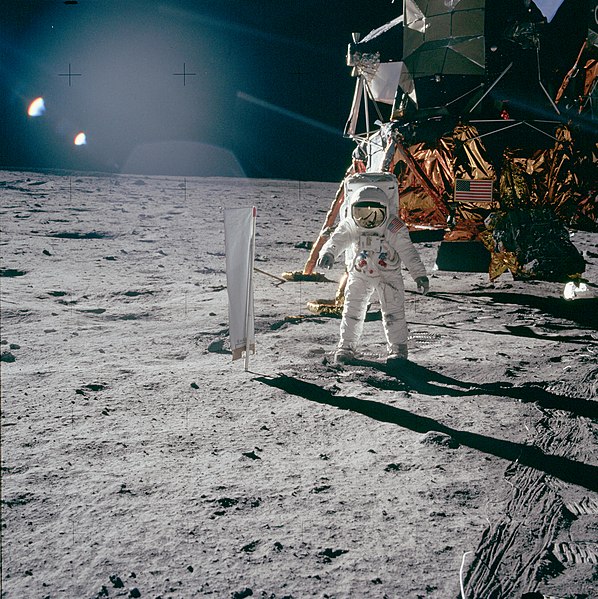
April 12, 1981: NASA launches the Space Shuttle Columbia
The Space Shuttle era began with the launch of the Space Shuttle Columbia, designated STS-1. The Space Shuttle program was a new phase in human spaceflight, designed for reusable spacecraft that could carry astronauts and payloads into low Earth orbit.
Columbia’s maiden flight marked the start of this program, which aimed to provide more regular and cost-effective access to space.
Over the years, the Space Shuttle fleet would undertake numerous missions, including deploying satellites, conducting scientific research, and assembling and servicing the International Space Station (ISS).
April 12, 1981: On the 20th anniversary of Yuri Gagarin’s flight, NASA launches the first space shuttle, Columbia, on STS-1
The launch of the Space Shuttle Columbia on STS-1 was not only a historic milestone in the Space Shuttle program but also a symbolic event.
It took place exactly 20 years after Yuri Gagarin’s historic flight, and this timing emphasized the United States’ commitment to advancing human space exploration. The Space Shuttle program introduced the concept of reusable spacecraft, with the shuttles launching like rockets and landing like airplanes.
This innovation was intended to make space travel more routine and cost-effective, allowing astronauts to conduct a wide range of missions in orbit.
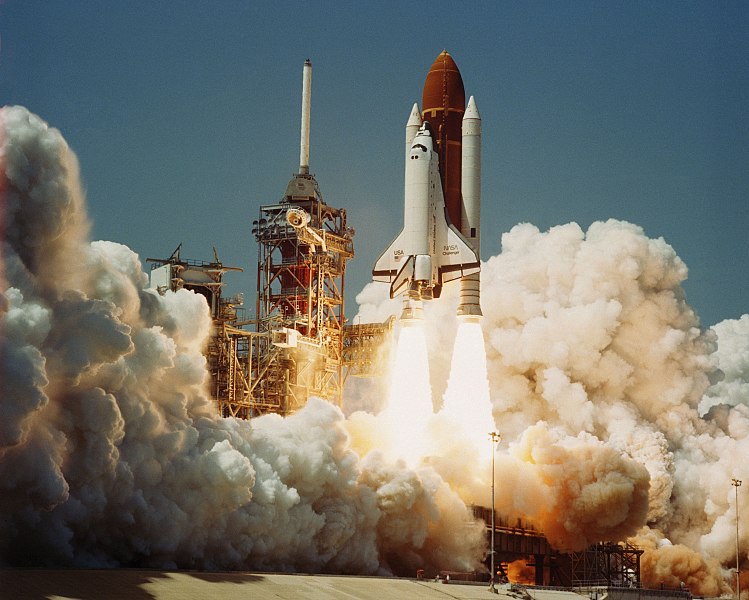
1986: The Challenger disaster occurs, resulting in the loss of the Space Shuttle Challenger and its crew
The Challenger disaster was a tragic event in the history of space exploration. On January 28, 1986, the Space Shuttle Challenger, mission STS-51-L, broke apart 73 seconds after liftoff, resulting in the loss of all seven crew members on board.
This devastating accident was caused by the failure of an O-ring seal in one of the solid rocket boosters, which allowed hot gases to escape and damage the external fuel tank.
The disaster led to a suspension of the Space Shuttle program and a thorough investigation into the causes of the accident. It was a somber reminder of the risks and challenges associated with human spaceflight.
1988: Soviet cosmonaut Valery Polyakov begins his record-setting 437-day spaceflight aboard the Mir space station
Valery Polyakov, a Soviet cosmonaut, embarked on a remarkable spaceflight that lasted 437 days, making it one of the longest continuous human space missions in history.
Polyakov spent this extended period aboard the Mir space station, conducting scientific experiments and medical studies. His mission provided valuable insights into the long-term effects of space travel on the human body, including the impact of extended weightlessness.
Polyakov’s endurance and resilience in space were significant contributions to our understanding of human spaceflight and the challenges of long-duration missions.
November 20, 1998: The first module of the International Space Station (ISS) is launched into orbit
The International Space Station (ISS) is a collaborative effort involving multiple countries, including the United States, Russia, Europe, Japan, and Canada. On November 20, 1998, the first module of the ISS, named Zarya, was launched into orbit.
Zarya served as the foundation for the construction of the ISS and marked the beginning of continuous human presence in space. Over the years, numerous modules, laboratories, and components were added to the station, turning it into a symbol of international cooperation in space exploration.
The ISS has been used for scientific research, technology development, and international diplomacy, serving as a platform for astronauts from various nations to live and work in space.

November 2, 2000: The first long-term crew, Expedition 1, arrives at the International Space Station
On November 2, 2000, Expedition 1 marked the beginning of continuous human habitation on the International Space Station (ISS).
The Expedition 1 crew, consisting of American astronaut William Shepherd and Russian cosmonauts Yuri Gidzenko and Sergei Krikalev, arrived at the ISS and began their extended stay in space.
This event was a significant step in the development of the ISS as a space laboratory and demonstrated the ability of astronauts to live and work in the challenging environment of space for extended periods.
Since then, the ISS has hosted numerous expeditions, advancing our understanding of various scientific and technological aspects of space exploration.
July 21, 2011: NASA’s Space Shuttle program comes to an end with the final flight of Atlantis on STS-135
NASA’s Space Shuttle program, which began with the launch of the Space Shuttle Columbia in 1981, came to a close with the final mission of the Space Shuttle Atlantis, designated STS-135. This marked the end of an era in human spaceflight for the United States.
The Space Shuttle program was known for its reusable spacecraft, which carried astronauts and payloads to low Earth orbit, including the International Space Station (ISS).
The retirement of the Space Shuttle fleet was part of NASA’s transition to new exploration initiatives, such as the development of the Space Launch System (SLS) and the Orion spacecraft for deep space missions.
December 14, 2015: SpaceX achieves a historic milestone by successfully landing the first stage of its Falcon 9 rocket vertically after a mission
SpaceX, a private aerospace company founded by Elon Musk, achieved a historic milestone when it successfully landed the first stage of its Falcon 9 rocket vertically after a mission.
This marked the first time that a rocket’s first stage had been recovered intact and made ready for potential reuse. Reusable rocket technology has the potential to significantly reduce the cost of access to space, making space exploration more sustainable and accessible.
SpaceX’s achievement represented a major advancement in the commercial space industry and set the stage for future developments in reusable rocket technology.
July 30, 2020: NASA launches the Perseverance rover to Mars, marking the latest mission in the exploration of the Red Planet
NASA’s Mars 2020 mission, which included the Perseverance rover, was launched with the goal of exploring the Martian surface, searching for signs of past microbial life, and collecting samples for future return to Earth.
Perseverance is equipped with advanced scientific instruments and technology, including the Ingenuity helicopter, which demonstrated powered flight on another planet for the first time.
The mission represents a significant step in humanity’s ongoing exploration of Mars and the search for potential signs of extraterrestrial life.
October 5, 2021: Russian actress Yulia Peresild and director Klim Shipenko become the first civilians to travel to the ISS as part of a film production project
In an unprecedented event, Russian actress Yulia Peresild and film director Klim Shipenko became the first civilians to travel to the International Space Station (ISS) as part of a film production project.
The mission, named “Challenge,” involved the shooting of scenes for a movie while aboard the ISS. This endeavor demonstrated the increasing commercialization and diversification of space activities, with private individuals and industries gaining access to space for various purposes, including entertainment and tourism.
The mission highlighted the evolving landscape of human spaceflight and the expanding opportunities for space exploration beyond traditional government programs.
